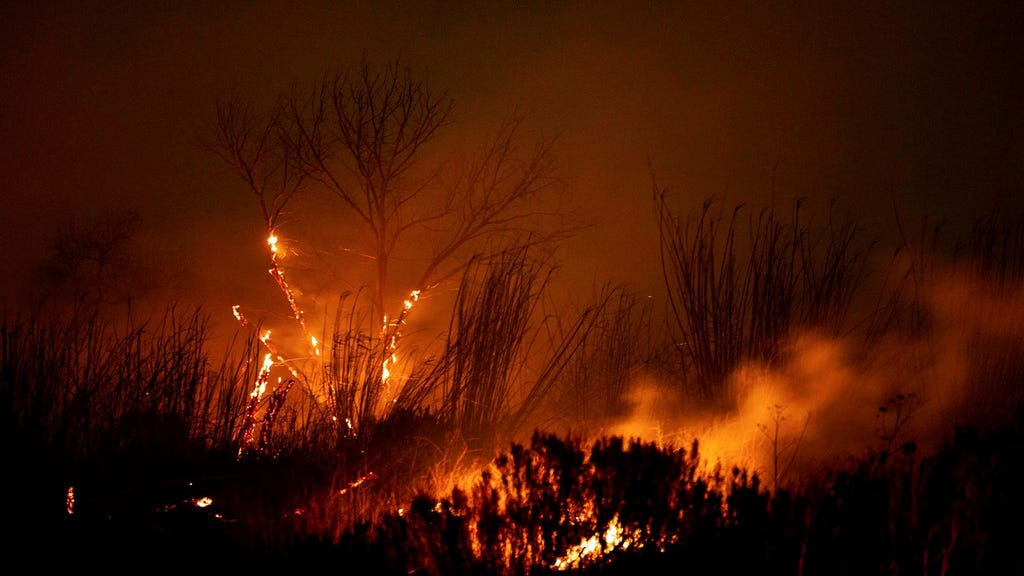The Los Angeles and Ventura counties are bracing for potentially catastrophic fire conditions as a fourth red flag warning, indicating a ”particularly dangerous situation,” has been issued. This warning, rarely employed even for severe weather events like tornadoes, highlights the extreme nature of the fire risk. Strong, life-threatening winds gusting up to 31 meters per second (approximately 70 miles per hour) are anticipated, creating an environment ripe for rapid fire spread and the ignition of new blazes. Authorities are urging residents to remain vigilant, prepare for potential evacuations, and avoid any activities that could spark a fire. The National Weather Service emphasizes the severity of the situation, calling for heightened awareness and preparedness.
This red flag warning comes as firefighters continue to battle two major wildfires, the Palisades Fire and the Easton Fire, which have collectively consumed over 15,300 hectares (approximately 37,800 acres) of land. Despite ongoing efforts, containment remains a challenge, with the Palisades Fire only 17% contained and the Easton Fire at 35% containment. The powerful winds predicted by the red flag warning threaten to exacerbate these existing fires and potentially ignite new ones, putting further strain on already stretched resources. The combination of dry vegetation, low humidity, and extreme winds creates a highly volatile situation, demanding extreme caution and proactive measures.
The scale of devastation wrought by these wildfires is immense. California Governor Gavin Newsom has suggested that this could be the worst natural disaster in US history. The sheer number of firefighters involved – around 8,500 from seven US states, as well as Mexico and Canada – underscores the magnitude of the response required. The loss of life is tragic, with at least 24 confirmed fatalities. The property damage is equally staggering, with estimates suggesting that approximately 12,000 buildings, including entire residential neighborhoods, have been destroyed.
The impact of these fires extends beyond the immediate flames, affecting air quality and displacing thousands of residents. The smoke and ash generated by the fires have created hazardous air quality conditions across the region, posing health risks to vulnerable populations. The displacement of residents due to mandatory evacuations adds another layer of complexity to the crisis, requiring substantial resources for temporary housing and support services. The long-term consequences of these fires, including environmental damage, economic losses, and the emotional toll on affected communities, will be significant.
Los Angeles Mayor Karen Bass, after surveying the devastation from the air, described the scale of destruction as unimaginable. Her firsthand account underscores the profound impact of these fires, transforming landscapes and leaving behind a trail of destruction that will take years to recover from. The images of burned-out homes and charred landscapes serve as a stark reminder of the power of these fires and the vulnerability of communities in fire-prone areas. The ongoing efforts of firefighters and emergency personnel are critical in containing the fires and mitigating further damage.
The current situation in Los Angeles and Ventura counties demands continued vigilance and preparedness. Residents are urged to heed the warnings issued by authorities, stay informed about fire conditions, and have evacuation plans in place. The extreme fire danger posed by the strong winds requires proactive measures to minimize risks and protect lives and property. The collaborative efforts of firefighters, emergency responders, and community members are crucial in navigating this challenging situation and supporting recovery efforts. The long road to recovery will require sustained resources and community resilience.














